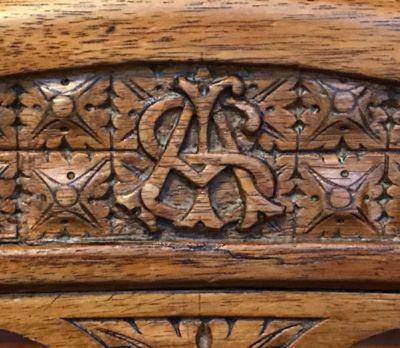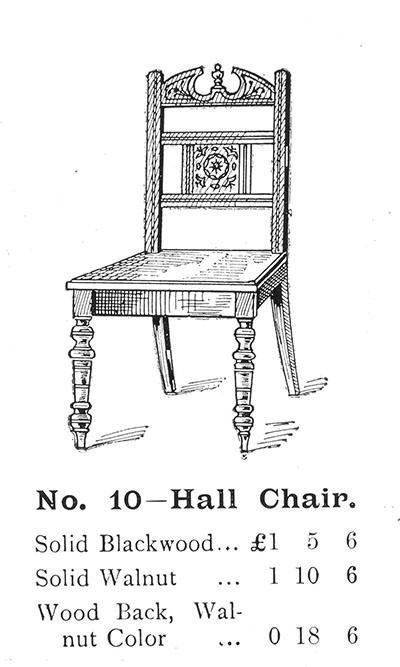
We had the wording around the new brand but now we needed a new logo to reflect this but where did the inspiration come from and what does it all mean? We wanted the logo to proudly reflect our origins and highlight our role as the keepers of the stories behind our collections and community.
We didn’t have to look too far as the graphic designer from NATION, a marketing and communications agency, found out as they explored the Library’s three buildings. In the beautiful Mortlock Wing they found what they were looking for.
On the back of a group of 19th century wooden chairs was a decoratively carved SAI for the South Australian Institute. The carving of initials, much like heraldic shields, has a long history in Britain and would be found across a range of elements that tied the interior design together. The SAI is an early example of this tradition in South Australia.

Opened in 1861, the Institute Building is one of Adelaide’s most historically significant buildings, built by the government for the South Australian Institute. The State Library of South Australia, the South Australian Museum and the Art Gallery of South Australia can all trace their origins to this building. As well as providing a library, museum and art gallery, the South Australian Institute ran a program of soirees, lectures and adult education classes in the days before secondary or tertiary education.
History behind the chairs
Research in the State Library’s government archives held at State Records unearthed a document dating from 1860 calling for tenders to supply furniture and fittings for the South Australian Institute reading room. The quote by Shephard Mayfield for £151 9 shillings was the second cheapest quote. The supervisor of works noted on the tender document dated 6 July 1860 that his reason for recommending Mayfield was the “chairs of all classes being superior to those of the cheaper quote”. The collection of chairs total 127 in number.

The State Library has a furniture catalogue of S Mayfield & Sons dating from around 1902, which has a section for Library and Office Furniture, and a drawing of a chair that resembles the library’s chairs. The chairs are made of cedar and their decoration combines machined wood turning and carving. The wood surface has been finished with a dark polish.
Shepard Mayfield arrived in Adelaide in 1849 and established a furniture business in 1851 and became ‘& Sons’ in 1862. Their cabinetmaking business was located at 89 Rundle Street, just east of a laneway formerly known as Lindes Lane, renamed No Fixed Address after a local band. The business was active until 1911. Mayfields received an Order of Merit for upholstery at the exhibition of 1881 and there is a magnificent 1866 Breakfront Bookcase by them in the Art Gallery of South Australia.
Collection of books, collection of colours

Inspiration for the colour palette was again taken from elements and objects in the Mortlock Wing of the Library. On a nearby shelf to the chairs was a group of books which Robert Gouger donated to the South Australian Literary Society as the basis of the new colony’s library in 1834. This was even before the books set sail on the Tam O’Shanter in 1836. The rich but subtle ochres, greens and blues of the book covers spoke of another time but were timeless in their natural beauty.

Drawing on the heritage of the library, what emerged was a contemporary version of the SAI logo. It can be elegant in black and white, or warm and colourful in oranges, greens and blues. The words State Library South Australia proclaim our unique place in the world.
Next time you are in the State Library, look out for the SAI logo on the chairs, stairs and brass door handles in the Mortlock Wing, and high up in the northwest corner of the Centre of Democracy in the Institute Building. This historic reference now paves the way into the future directions of the Library.
Written by Carolyn Spooner, Community Learning Librarian